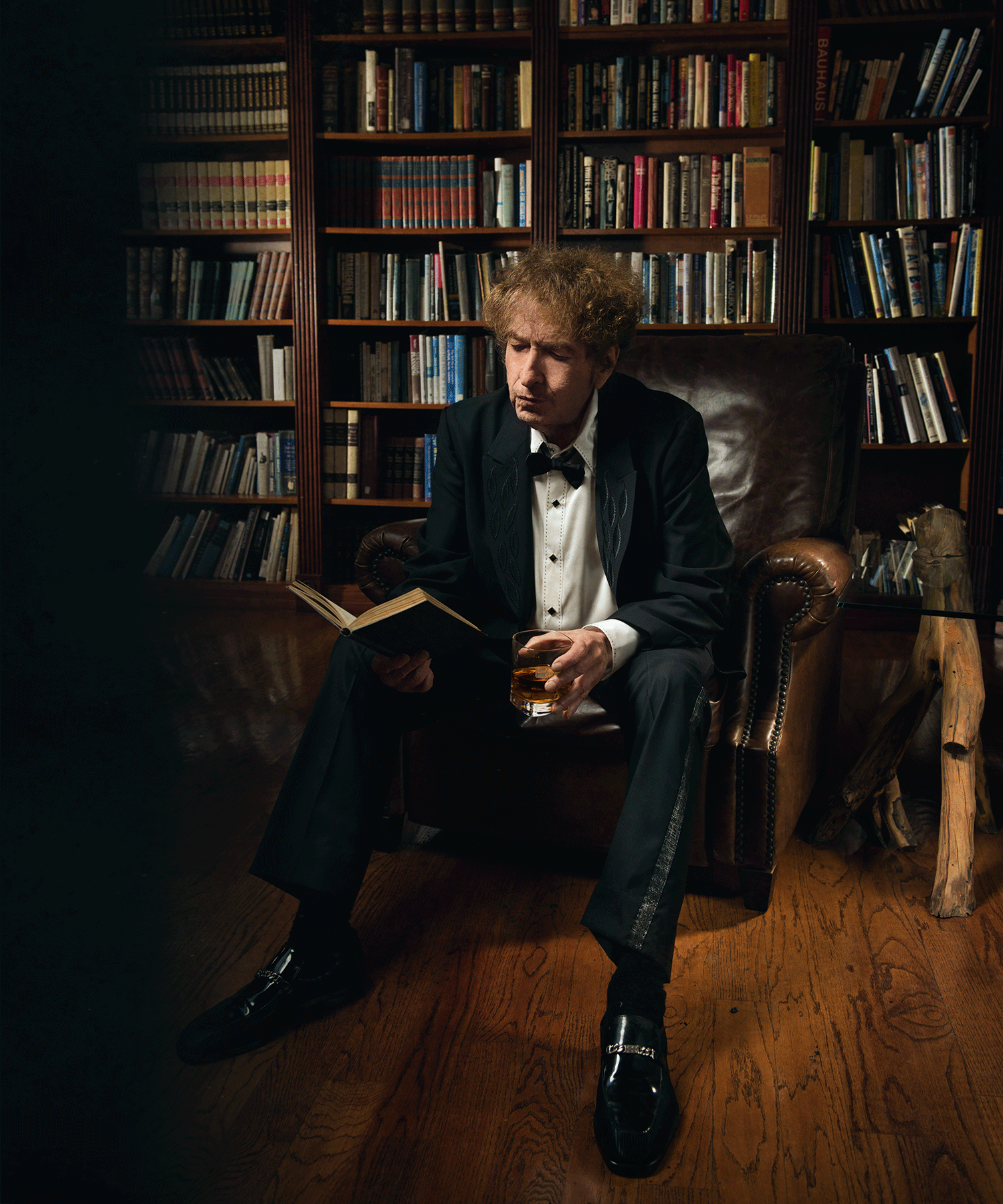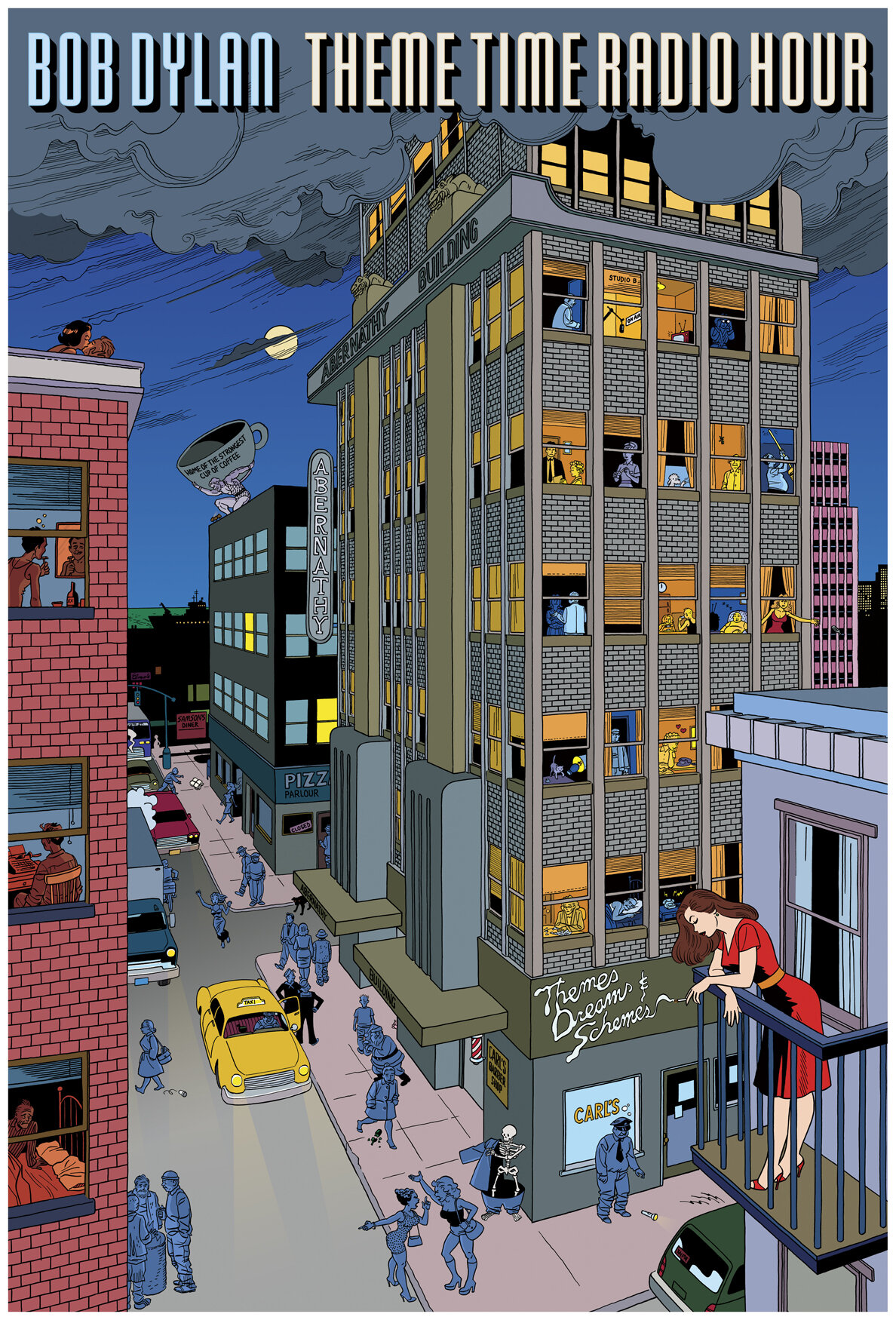warning: contains spoilers. GO listen to the show before you read this (link here; also available on youtube)
From 2006 until 2009, Bob Dylan manned a satellite radio show called Theme Time Radio Hour. The themes, dreams, and schemes he explored, with the help of an excellent staff of researchers and executive producer Eddie Gorodetsky, included cars, hair, trains, Christmas, flowers, and California. Individual shows on each topic featured familiar and obscure songs about them, poetry readings, history lessons, jokes so terrible they’re delicious, and whatever Dylan felt like tossing into the mix. The hundred shows are old friends, now, and some of the best road-tripping listening you can find.
The announcement of a brand-new episode of TTRH, to be aired September 21st on Sirius XM Radio, sent Dylan fans into transports. That it was to be about whiskey, and in conjunction with Bourbon Heritage Month, didn’t undercut any glee. Yes, Dylan is in partnership with Heaven’s Door Spirits, and therefore makes and sells whiskey himself these days. TTRH’s “Whiskey” isn’t about for-profit and self-promotion, though. Heaven's Door has just launched its second annual #ServeSomebody philanthropic program, which works with food banks across the United States. With more than 20 million Americans now jobless since COVID-19, and many of those people working in the food, beverage and hospitality industry, meal donations matter intensely. Heaven’s Door is donating for every bottle or beverage sold, and hopes to offer 300,000 free meals by October 31. If the popularity of this special radio show increases that number, so much the better.
“It’s nighttime in the city. There’s a hint of jasmine in the air. A startled cat runs across the piano keys….”
“Hello, friends, and welcome back to Theme Time Radio Hour. I’m your host, Bob Dylan. To paraphrase Alexandre Dumas in The Count of Monte Cristo, I’m so delighted to see you again, it makes me forget for the moment that all happiness is fleeting.” My, it’s good to hear Dylan sounding so fresh and clear. On stage, of course, he uses his singing voice — like all performers do. On the old TTRH, he had a persona, a gruff growly Wolfman-Jack dj way of speaking. Here, in “Whiskey,” he talks in his normal voice, and quite conversationally. It makes the stories and songs he shares feel porchside, living-room — a throwback to the days when families gathered around the towering wood-cased Zenith for fireside chats and all kinds of radio hours. “Theme Time Device Hour” isn’t going to happen, even if you’re listening on what looks like cigarettes shoved into your ears.
“Quiet Whiskey,” by Wynonnie Harris, comes with a lesson about Harris’s fellow songwriters. Dylan loves the standards and schools us in them: from a line in a 1928 book through a Sleepy John Estes song we arrive at Charlie Poole. The great Charlie Poole, Dylan’s fellow Columbia recording artist, who “knew how to take lemons and make lemonade,” mashed up Estes’s song with the earlier “Hesitation Blues” and “If the River Was Whiskey” was born. If you don’t like my peaches, dontcha shake my tree.
Dylan tells the story of a molasses flood in the North End of Boston in January 1919, when a rum manufacturing tank exploded and the 40-foot flowing wall of viscous sugar killed 21 people. He tells us of Johnny Bush and Willie Nelson’s friendship, and Bush’s unique voice, which, says Dylan, “it had a little catch in it, like a built-in heartbreak.” This episode of TTRH couldn’t have been without Nelson’s funky classic version of “Whiskey River.” Musing about whiskey bottles leads into bottleneck blues: guitars styled with slides from actual bottlenecks (and knives, and pieces of copper pipe). Dylan rightly calls Derek Trucks “maybe the best of them all, keeping that sound alive.” This may seem like a minor point, but it is not: one thing I have always appreciated about TTRH is Dylan’s giving credit not just to the recording artists and singers you know, but to the songwriters. He names them all, and lets you know about them. It’s appropriate, and generous.
A checklist of whiskey drinks ends with The Average Redhead….a new one on me. Someone needs to make me one, please. Bobby Charles would have known how to. Charles’s “He’s Got All the Whiskey,” a snaky, sexy, envious Southern blues that lights up the night, is one of the best moments in this episode of TTRH.







